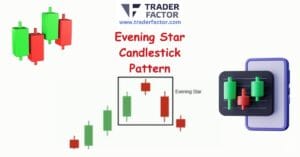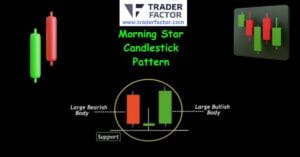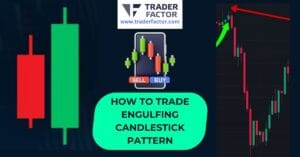Trading can feel overwhelming, especially if you’re a beginner. Without proper risk management, your trading capital can take a hit. One of the most essential tools in trading is the stop-loss order. It helps protect your investment by minimizing losses during unfavorable market movements. But how do you implement the best stop-loss strategy? This guide will walk you through everything you need to know about stop-loss in trading and provide strategies tailored for beginners.

Table of Contents
ToggleWhat is Stop Loss in Trading?
A stop-loss order is a preset instruction to sell a security when it reaches a specific price. Think of it as your safety net. For example, if you buy a stock at $100 and set a stop loss at $95, your trade will close automatically if the price drops to $95, preventing further losses.
This tool is invaluable for all types of trading, including forex, crypto, and options. Using stop-loss ensures you’re prepared for sudden market changes, avoiding emotional decisions that could worsen losses. It helps traders at any experience level stick to their strategies and focus on preserving capital.
Stop Loss in Trading Example
Suppose you’re trading forex. You buy EUR/USD at 1.1000, expecting the price to rise. To manage your risk, you set a stop-loss order at 1.0950, 50 pips below the entry price. This means if the trade doesn’t go in your favor, your position will close automatically at 1.0950, limiting your loss to those 50 pips.
Why Beginners Need a Stop-Loss Strategy
Without a stop-loss, your portfolio could suffer substantial losses when the market moves against you. Stop-loss orders are particularly vital in unpredictable and highly-volatile markets such as crypto and forex. Having a clear stop-loss strategy helps you limit losses and manage emotions, which are critical for trading success.
What is Stop Loss and Take Profit in Forex?
Stop loss in forex is the price level where your trade will close to minimize losses. Take profit, on the other hand, is the price level where your trade closes to lock in profits. For example, in a forex trade, you might set your stop loss 30 pips below entry and your take profit 60 pips above. This creates a risk-reward ratio of 1:2.
Best Stop Loss Strategies for Beginners
There are several effective strategies that traders of all levels can use. Below are some of the most beginner-friendly options for different types of trading.
Best Stop Loss Strategy for Crypto Trading
Crypto markets are notoriously volatile, making stop-loss orders a must. A popular technique is the percentage-based stop loss, where you limit the amount you’re willing to lose on a trade. For instance, you might decide to risk 2% of your capital per trade. If you buy Bitcoin (BTC) at $90,000, with a 2% stop loss, your exit price would be $89,400.
Another useful approach is the trailing stop loss. This adjusts your stop-loss level as the price moves in your favor, locking in profits. For example, if BTC rises to $93,000, the trailing stop could automatically adjust to $92,000, ensuring you secure a minimum profit if the price pulls back.
Trailing Stop Loss Example
Imagine you buy Ethereum (ETH) at $3,000 using a 5% trailing stop loss. If the price rises to $3,200, your stop loss will adjust to $3,090 (5% below the new price). It protects part of your potential gains as the price climbs.
Best Stop Loss Strategy for Forex Trading
Forex trading often involves high leverage, so precise risk management is crucial. Price levels are an ideal strategy in forex. For instance, placing your stop loss just below a key support level can help minimize risk.
To calculate a stop loss in forex, use a pip value calculator, which factors in your lot size, pair traded, and your account currency. This technical precision ensures your stop loss aligns with your risk tolerance.
Stop Loss Forex Example
If you buy GBP/USD at 1.3500 and the pair has strong support at 1.3450, you could set your stop loss below that level, say at 1.3440, to avoid unnecessary losses.
Best Stop Loss Strategy for Intraday Trading
Intraday trading relies on short-term price movements, so quick stop-loss adjustments are key. A time-based stop loss can work well, where you set a time limit to close your position if it hasn’t reached your target price or stop-loss level by a specific hour.
Alternatively, use volatility-based stop losses, which involve basing your risk level on the day’s average price fluctuations. Tools like ATR (Average True Range) can help fine-tune this approach.
Best Stop Loss Strategy for Options Trading
Options trading is unique because the price movement of an option is tied to its underlying asset. Here, you can use a percentage-based strategy, similar to crypto and stocks. Another method is to set a stop loss based on the implied volatility changes, which significantly affect option prices.
How to Calculate Stop Loss
Calculating your stop loss is straightforward if you follow these steps:
- Decide your risk tolerance per trade. A common recommendation is to risk no more than 1%-2% of your total capital.
- Identify the entry and exit points. Use technical analysis to pinpoint resistance and support levels.
- Set position size. Adjust your trade size so that the dollar risk aligns with your tolerance.
For instance, if your risk tolerance is $100 and the trade involves a 10-pip stop loss, calculate position size using the formula:
Lot Size = Account Risk ÷ (Stop Loss in Pips × Pip Value Per Lot)
Percentage-Based Stop Loss Strategy
A percentage-based stop-loss is highly popular among beginners due to its simplicity. This strategy involves risking only a fixed percentage of your capital on each trade. For instance, sticking to the 1%-2% rule means risking $100-$200 if your account balance is $10,000.
For day trading, the best stop-loss percentage typically ranges from 1%-2%. This approach keeps potential losses minimal, even during periods of high volatility. To apply this strategy, calculate the percentage risk based on your account balance, then set your stop-loss level accordingly. This method is widely applicable, whether you’re trading forex, crypto, or stocks.
Trailing Stop Loss Strategy
Trailing stop-loss is especially effective in volatile markets like forex and crypto, where prices frequently swing. It allows traders to lock in profits while leaving room for further gains. Platforms like Binance and TradingView make it simple to automate trailing stops. However, use caution when setting the trail distance; overly tight settings can close trades prematurely during minor fluctuations.
Advantages of Trailing Stop Loss
- Automatically locks in profits.
- Removes emotional decision-making from trades.
- Works well in trending markets.
Disadvantages of Trailing Stop Loss
- Can result in premature exits during market noise.
- Requires careful setup to avoid unnecessary triggers in volatile conditions.
Trailing Stop Loss Forex and Crypto Examples
On TradingView or Binance, you can set a 10% trailing stop loss for crypto positions or a 50-pip trailing stop for forex trades. If the price of your Bitcoin trade increases from $98,000 to $100,000, a 10% trailing stop ensures you keep at least $99,000 if the price retreats.
Using Indicators for Stop Loss
1. ATR-Based Stop Loss
The Average True Range (ATR) measures market volatility and helps decide where to place your stop-loss. For instance, if the ATR is 10 pips on EUR/USD, you might set your stop-loss 10-15 pips below support levels. This accounts for typical price movements and reduces the chance of getting stopped out prematurely.
ATR-based trailing stops are highly effective because they adapt to market conditions. They widen during volatile swings and tighten during calm trends, offering dynamic protection for your capital.
2. Support and Resistance
Support and resistance levels are key areas where prices tend to stall or bounce. Placing stop-loss orders below support for long trades or above resistance for short trades increases their effectiveness. For example, if a stock is trading at $50 and shows strong support at $48, you might set your stop-loss slightly below $48 to avoid getting stopped during momentary dips.
Both beginners and seasoned traders find this strategy reliable since it aligns with market psychology. However, always leave a buffer between levels and stop points to account for noise.
Final Tips for Beginners
- Always stick to your stop-loss levels. Emotion-driven changes are a recipe for loss.
- Test different strategies, like percentage-based or trailing stop losses, to find the best fit for your trading style.
- Use reliable tools like stop-loss calculators and platforms like TradingView or Binance to automate your trades.
Frequently Asked Questions

What is the best stop-loss rule?
The best stop-loss rule is to risk only 1-2% of your total trading capital on a single trade. This ensures that any loss will be manageable and won’t significantly impact your overall portfolio.
What is the best option stop-loss strategy?
A common strategy for options trading is to use a percentage-based stop loss, such as exiting a trade when its value drops by 20-30%. You can also set stop losses based on changes in implied volatility.
What is TP and SL in forex?
TP stands for take profit, which is the price at which you’ll close a trade to secure profits. SL, or stop loss, is the price level where you’ll exit the trade to limit losses.
What is the 7% stop-loss rule?
The 7% stop-loss rule suggests closing a position once your trade loses 7% of its value. It’s a popular tactic for stock trading to minimize risks.

How does stop-loss work in trading?
A stop-loss order automatically closes your position if the price drops to a predetermined level. This helps you avoid larger losses during unfavorable market movements.
What is a stop-loss example?
Suppose you buy a stock at $50 and set your stop loss at $45. If the stock price falls to $45, your position will automatically close, limiting your loss to $5 per share.
What is the golden rule for stop-loss?
The golden rule is to always stick to your stop-loss level and never adjust it based on emotions. This discipline protects your capital and improves your trading consistency.
Which indicator is best for stop-loss?
The Average True Range (ATR) is widely used for setting stop-loss levels. It helps account for volatility by recommending a distance away from your entry price.
How do you predict stop-loss?
You can predict stop-loss levels by analyzing support and resistance areas or using volatility-based indicators like the ATR. This ensures your stop loss aligns with market conditions.

How to use ATR for stop-loss?
Multiply the ATR value by a factor, such as 2, and subtract it from the entry price for a long trade or add it for a short trade. This creates a stop loss that adjusts for market volatility.
How many pips should your stop-loss be?
The number of pips depends on the market’s volatility and your risk tolerance, but 20-50 pips is common for forex day trading. Use technical levels like support or resistance to guide placement.
Is 30 pips stop loss good?
A 30-pip stop loss can be effective in low-volatility scenarios. However, always consider the currency pair and market conditions when deciding your stop-loss size.
How to set proper stop loss?
To set a proper stop loss, use technical analysis to find key levels, determine your risk percentage, and calculate the distance from your entry price. This ensures your stop loss is both logical and effective.
What is the formula for stop-loss?
The formula is Stop-Loss Level = Entry Price ± (Risk Percentage × Account Balance ÷ Lot Size). Adjust it based on whether it’s a long or short trade.

What is the 1% stop-loss rule?
The 1% stop-loss rule means risking no more than 1% of your capital on any single trade. This minimizes potential losses and helps you stay in the game longer.
What is the 2% stop-loss rule?
The 2% rule allows you to risk 2% of your total trading capital on a single trade. It balances risk and reward while protecting your account from large losses.
What is trailing stop-loss with an example?
A trailing stop-loss moves with the price as it climbs higher. For example, if you buy a stock at $100 and set a trailing stop at $5, the stop will rise to $105 if the stock reaches $110, protecting your gains.
Are trailing stop losses a good idea?
Yes, they work well in trending markets as they automatically lock in profits while allowing trades to run. However, they can trigger prematurely in volatile conditions.
Which indicator is best for trailing stop-loss?
Indicators like the ATR are great for setting dynamic trailing stops. They factor in volatility and help ensure your trailing stop moves appropriately with price changes.
What does 25% trailing stop mean?
A 25% trailing stop means your position will close if the price drops 25% from its recent high. It ensures you lock in at least 75% of your maximum gains.
How to use trailing stop?
Set a fixed percentage or dollar amount for the trailing stop, and your trading platform will automatically adjust the stop-loss level as the price moves in your favor. This eliminates the need for manual adjustments.
Disclaimer:
All information has been prepared by TraderFactor or partners. The information does not contain a record of TraderFactor or partner’s prices or an offer of or solicitation for a transaction in any financial instrument. No representation or warranty is given as to the accuracy or completeness of this information. Any material provided does not have regard to the specific investment objective and financial situation of any person who may read it. Past performance is not a reliable indicator of future performance.















